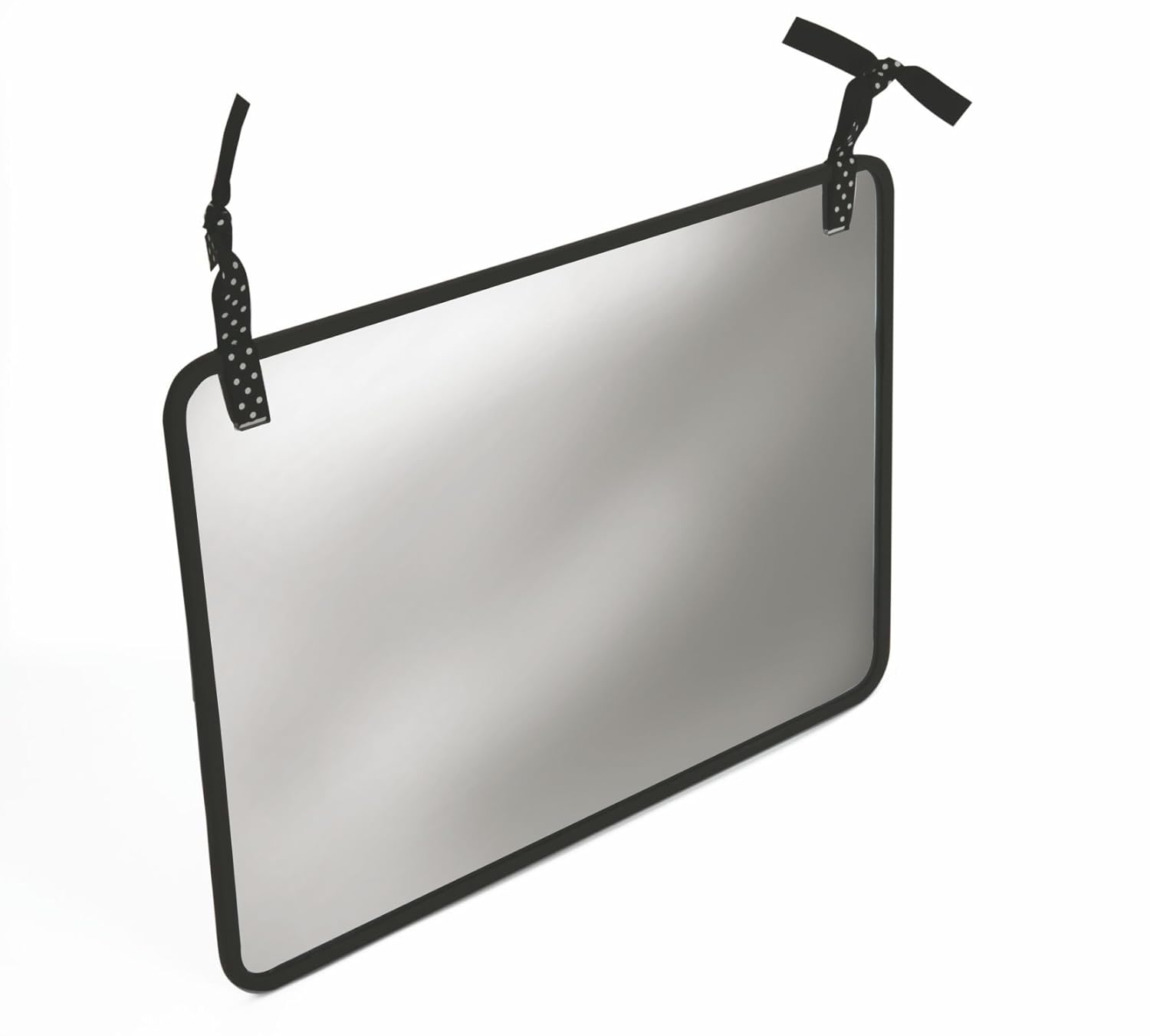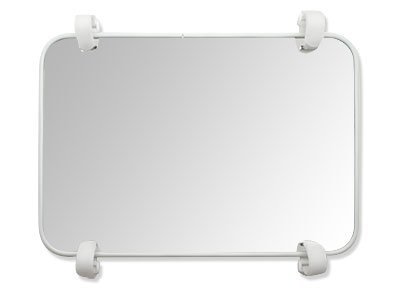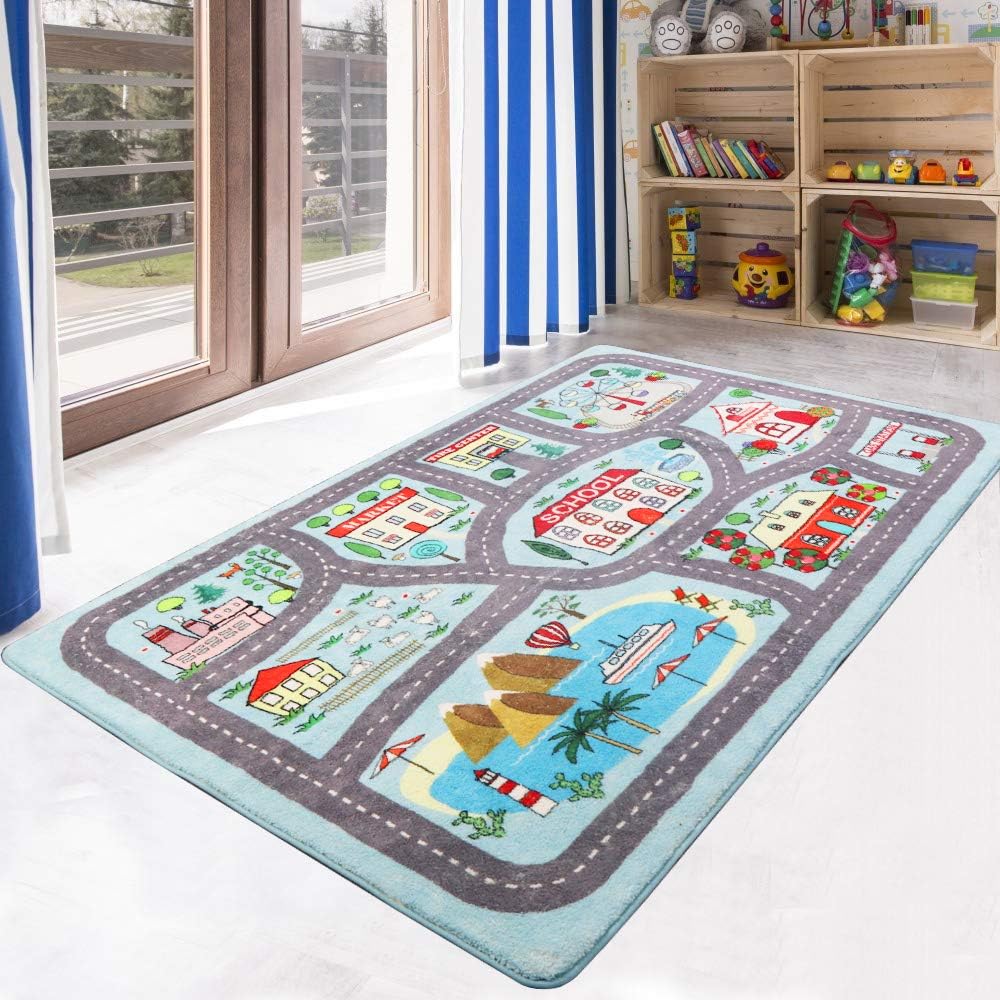Inside: How to create a baby play area that will grow with your child and become a toddler play area! Encourage independent play and development with design.
When my son was 7 months old we braved transatlantic travel and took him to my husband’s hometown in Sweden.
My mother-in-law had borrowed cribs, one of those European prams (I loved walking around like a true European with a pram!), a car seat, high chair — everything we could possibly need.
She also set up a play area for my son in their living room. It was a foam mattress topper — think thin mattress — covered with a cozy wool blanket and toys in baskets.

The great thing about this play area was that the adults spent more time down on baby’s level — laying down reading books, playing airplane, looking at toys together, and just hanging out. It became the gathering space for the whole family.
But also, my 7-month-old son could entertain himself in this cozy space– just staring up at the Christmas tree, “reading” books, and exploring the objects on the bed.
I loved it and decided I needed to replicate it at home.
It turns out that this idea is similar to Montessori play spaces for babies, the main feature of which is a floor bed, which is a place for baby to nap or play.
Maria Montessori believed in providing the tools and environment that encourage children, and yes even babies, to explore independently.
It is also a hallmark of attachment theory — the securely attached baby will desire to explore their environment — independently — knowing their attachment figure is nearby and will respond to true cries when needed.
Like our current playroom, this playspace is designed to grow with your child. This space grew with him until he was almost three. Then we moved and components of this space became the basis of his playroom in our new house.
How to Create a Montessori Play Area for Your Baby and Toddler
Make a Floor Bed
This is the most important component of the baby play area. Having a floor bed makes it easy to get down on the baby’s level and becomes a gathering place for the family to hang out.
I’ve mentioned this before, but one thing child psychologists like to say is “The best toy for your baby is you.”
There is so much research on how talking to your baby and playing with your baby is the best thing for their development.
The floor bed is a great place to hang out, read books, let your baby crawl over you, practice tummy time, and just be.

Also, it creates a designated area for baby to hang out and explore independently.
For the floor bed, we used a full-sized mattress topper from Ikea that we already had. Then I surrounded the mattress with body pillows so my son could move around without rolling into a wall.
As an alternative to a mattress topper or bed, you could do non-toxic play tiles with no bedding.
Important: If you plan to use this as a place for baby to nap or if you have a baby who can not yet turn over, you might want to skip the pillows — as they can be a suffocation hazard. My son never napped in his play space, for him it was a space for active play. As always, which this space can encourage independent play, it is not meant for unsupervised play.
Baby Mushroom Baby Bello Organic Play MatRegalo Sensory & Learning My Play MatBaby Play Mat
Hang Some Baby Art
For a younger baby, I recommend high-contrast art (black, white, and red patterns).
If you have a toddler, some cute ABC cards would be a fun addition.
The visual system is the last sensory system to develop in babies and is the most immature at birth. Black and white patterns will capture baby’s attention and also stimulate their visual system.
I really like this book which features real art that happens to be high-contrast. I often set this book up and placed my son on his tummy to look at it. Included in this book are high-quality posters of the images in the book.
Be sure you hang them low so that if your baby was on their tummy they would be able to see the pictures.
Ta-Da! Baby art installation!
Wee Gallery Art Cards for BabyArt for BabyABC Cards
Hang A Horizontal Mirror
Looking in a mirror is so entertaining for a baby!
Research shows that babies don’t reliably recognize themselves in the mirror until they are about 15–months-old!
This is another great tummy time activity. Babies love looking at human faces more than anything else, which is necessary for them to learn about emotions and social cues.

Manhattan Toy Wimmer-Ferguson Double-Feature MirrorLarge Double Sided Infant Crib MirrorInfant Coordination MirrorAcrylic Mirror Sheet
Include a Baby Gym
Jean Piaget, a well-known child psychologist, described the first stage of cognitive development as the “Sensorimotor” period.
During this time, babies experience the world through movement and their senses. They move through the world taking it all in through their senses in a haphazard, almost accidental, way. And as they grow, they began to realize that their movements cause interesting reactions.
This is how babies learn. Piaget called this process “circular reactions.”
I remember the first time my son finally grabbed one of the objects on his baby gym (see the video above).
At first, he just waved his arms and kicked excitedly when laying under his gym.
Over time, he noticed that when he waved his hands they would touch the objects and make them move.
After doing this accidently a few times, he started to try to coordinate his movement to touch the object.
This is an amazing step for a baby!
Circular reactions develop and become more coordinated across the first-year of life.
The Play GymWood Play GymBaby Infant and Toddler Activity Gym
 Soft Bins for Toys and Books
Soft Bins for Toys and Books
When your baby is a little older and is sitting up on her own, she will love to take things in and out of baskets and bins.
This is quite entertaining.
For your play area have a few soft bins like these with your favorite baby toys and lots of books. Reading is one of the best things you can do for your baby’s cognitive development other than face-to-face talk and play with you.
&
The other great thing is that these will work perfectly when your child is older to create all of those lovely Montessori invitations to play, like toys animals in one bin and animal cards in the other. The invitation is for your toddler to match the items.
How to Transition to a Montessori Toddler Play Space

When my son was about 18-months old we expanded his play space. We added a fabric bookshelf, and two Ikea TROFAST toy storage units, one tall one and one wide one.
The TROFAST units have since graduated to become part of a desk/play area in our playroom. I also added a colorful and fun rug to expand the play area for our growing boy.
The bookshelf and the toy storage units were both toddler-friendly and easy for him to choose books he wanted and find toys.

Having child-friendly and accessible furniture can help to foster greater independent play, which is a big milestone for toddlers.
Kids Road Traffic Area RugRound the Barnyard FarmWooden Sling Bookcase
The great thing about this play area for your baby and toddler is that it will both function to provide a place for you and your family to interact together, but also as a place for fostering some independent play.
Even babies can entertain themselves in the right environment!
Related:
Create a Playroom for 3 to 5-Year-Olds
Create a Calm-Down Space in your Home and in Your Heart!





















 The Playful Strategy That Will Help Your Spirited Child Calm Down
The Playful Strategy That Will Help Your Spirited Child Calm Down